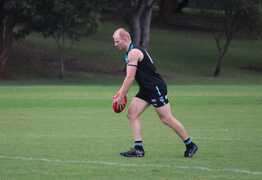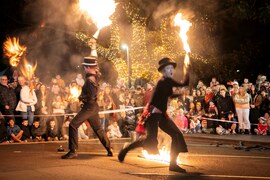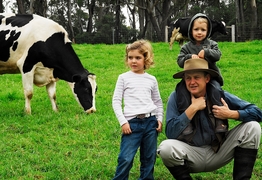Adventures in Climate Change Episode Four: Ranking uncertainty
Local Contributor
09 May 2025, 11:00 PM

By Ray Johnson
A big post-election welcome to first-time and regular readers. Today the task is to explore some of the key concepts the IPCC use to assess the wide range of individual climate-change-related
research projects from around the planet.
To simplify a complex matter, we begin by using the Rumsfeld matrix to explain the scientific task.
Donald Rumsfeld was the United States Secretary of Defence in 2002 and was responding to a media question linking Iraq with “weapons of mass destruction.”
He used the terms “Known knowns”, “Unknown knowns”, “Known unknowns” and “Unknown unknowns” to describe the intelligence space he worked in.
With climate change it’s the scientific process that takes us from things we are neither aware of nor understand (Unknown unknowns), to things we are aware of and understand (Known knowns).
Along the way science will grapple with things we are not aware of but do understand or implicitly know (Unknown knowns), and things we are aware of but don’t understand (Known unknowns).
The IPCC has been assessing science for over three decades. The process has been refined over time, and review and improvement continues. Higher level IPCC assessments use a mix of
degrees of “confidence” (a judgement of quality) and “likelihood” (an estimate of probability).
The IPCC has a very extensive glossary of definitions which is the reference for the short summary here.
Assessing “Confidence” takes account of the “type, amount, quality and consistency of evidence” as well as “the degree of agreement across multiple lines of evidence.”
A level of confidence is expressed using five qualifiers: very low, low, medium, high and very high, and typeset in italics, for example, medium confidence." (Summary for Policymakers AR6 WGI Note 4 p4)
“Likelihood” is “The chance of a specific outcome occurring, where this might be estimated probabilistically.”
“The following terms have been used to indicate the assessed likelihood of an outcome or result: virtually certain 99–100% probability; very likely 90–100%; likely 66–100%; about as likely as not 33–66%; unlikely 0–33%; very unlikely 0–10%; and exceptionally unlikely 0–1%.
Additional terms (extremely likely 95–100%; more likely than not 50–100%; and extremely unlikely 0–5%) are also used when appropriate.” (Summary for Policymakers AR6 WGI Note 4 p4)
Still with us? Some examples:
- “Globally, gross domestic product (GDP) per capita and population growth remained the strongest drivers of CO2 emissions from fossil fuel combustion in the last decade (high confidence)” AR6 WGIII Technical Summary TS3 The full AR6 WGIII report provided more detail for this assessment, noting “robust evidence, high agreement”. AR6 WGIII Report Ch 2 Executive Summary We are clearly in the ‘known knowns’ here. [Calling all politicians]
- Regarding future sea-level rise (beyond 2100) … “As emphasized by SROCC (an earlier IPCC Special Report), there is a substantial likelihood that sea level rise will be outside the likely range. As described in Box 1.1, since the definition of ‘likely’ refers to at least 66% probability, there may be as much as a 34% probability that the processes in which there is at least medium confidence will generate outcomes outside the likely range. Furthermore, additional processes in which there is low confidence may also contribute to sea level change.” AR6 WG1 Main Report Ch 9 Ocean, Cryosphere and Sea Level Change Par 9.6.3 The main uncertainties here relate to the Greenland and Antarctic Ice Sheets. Science in these locations is especially difficult eg under the Antarctic ice. The science is definitely in the ‘known unknowns’ and ‘unknown unknowns’ categories. Some recent research examples, with tentative projected outcomes measured in metres of sea-level rise over hundreds of years, are here and here.
We’ll conclude with two acknowledgements. First, a shout-out to local members of the Australian Religious Response to Climate Change and the South East Climate Alliance for their climate and energy election scorecard.
Secondly, and more importantly, with the passing of Pope Francis the world has lost one of the great advocates for protecting our natural environment and acting on climate change. No one was safe from his criticism as this media release from the May 2024 Vatican three-day summit From Climate Crisis to Climate Resilience clearly shows.
Some quotes from the media release: “The wealthier nations, around 1 billion people, produce more than half the heat trapping pollutants ... On the contrary, the 3 billion poorer people contribute less than 10%, yet they suffer 75% of the resulting damage.”
“An orderly progress is being held back by the greedy pursuit of short-term gains by polluting industries and by the spread of disinformation, which generates confusion and obstructs collective efforts for a change in course.”
The Pope appealed to policy makers to harness the regenerative power of nature in order to remove vast quantities of carbon dioxide from the atmosphere: “This holistic approach can combat climate change, while also confronting the double crisis of the loss of biodiversity and inequality by cultivating the ecosystems that sustain life.”
NEWS




